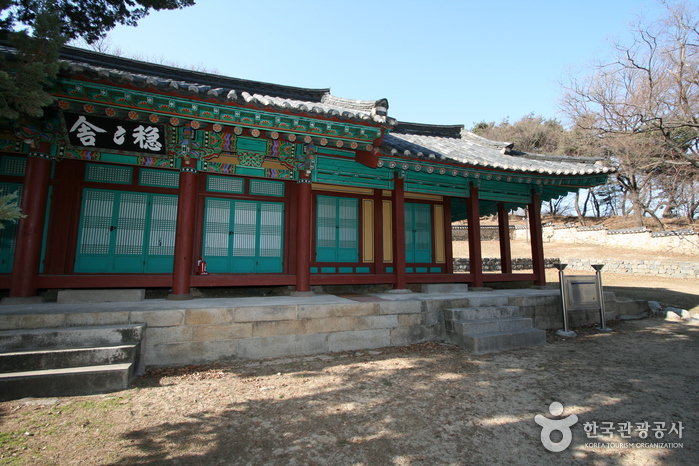Revecle - Newcore Gwangmyeong Branch [Tax Refund Shop] (레베끌레 뉴코아 광명점)
6.2Km 2024-06-27
8, Haan-ro 287beon-gil, Gwangmyeong-si, Gyeonggi-do
-
Crocodile - Newcore Gwangmyung Branch [Tax Refund Shop] (크로커다일 뉴코아 광명점)
6.2Km 2024-06-27
8, Haan-ro 287beon-gil, Gwangmyeong-si, Gyeonggi-do
-
Cindy Kids - Newcore Gwangmyung Branch [Tax Refund Shop] (신디키즈 뉴코아 광명점)
6.2Km 2024-06-27
8, Haan-ro 287beon-gil, Gwangmyeong-si, Gyeonggi-do
-
NC - Newcore Gwangmyeong Branch [Tax Refund Shop] (NC 베이직 뉴코아 광명점)
6.2Km 2024-06-26
8, Haan-ro 287beon-gil, Gwangmyeong-si, Gyeonggi-do
-
New Balance - Newcore Gwangmyeong Branch [Tax Refund Shop] (뉴발란스 뉴코아 광명점)
6.2Km 2024-06-28
8, Haan-ro 287beon-gil, Gwangmyeong-si, Gyeonggi-do
-
Esquire [Tax Refund Shop] (에스콰이아)
6.2Km 2024-06-28
8, Haan-ro 287beon-gil, Gwangmyeong-si, Gyeonggi-do
-
Passardi Golf - Newcore Gwangmyung Branch [Tax Refund Shop] (파사디 골프 뉴코아 광명점)
6.2Km 2024-06-26
8, Haan-ro 287beon-gil, Gwangmyeong-si, Gyeonggi-do
-
Davich Optical - Geumcheon Branch [Tax Refund Shop] (다비치안경 금천)
6.2Km 2024-04-22
415, Siheung-daero, Geumcheon-gu, Seoul
-
Ononsa Guesthouse (온온사)
6.2Km 2023-07-17
58 Gwanaksan-gil, Gwacheon-si, Gyeonggi-do
Though Ononsa, which was a guesthouse in Gwacheon, was constructed in the 27th year of King Injo's reign in the Joseon dynasty (1649), the name, "Ononsa," was given to this area during the reign of King Jeongjo. On February 11, 1790 during his royal procession to the tomb of his father, Crown Prince Sado, stayed at an inn in Gwacheon and, as he felt that it "has nice views and provides a comfortable stay," he bestowed upon the place plaques that he wrote himself - "Ononsa" to Seoheon and "Burimheon," which was the old nickname of Gwacheon, to Dongheon. This is how this place began to be called Ononsa.
It was designated as a Tangible Cultural Heritage of Gyeonggi-do on June 2, 1980, and it was restored on December 2, 1986 after being torn down.
Gahak-dong Dolmens (가학동지석묘)
6.2Km 2020-04-28
Gahak-dong, Gwangmyeong-si, Gyeonggi-do
+82-2-2680-6142
Gahak-dong Dolmens site is an ancient site where religious rites were conducted before burial ceremonies. Located on top of the mountain by Beolmal Village, the site dates from the Bronze Age and shows traces of megalithic worship.
There are six dolmens: a table-shaped dolmen is at the western end of the ceremonial space and the remaining five are situated on the opposite side, aligned from east to west.
![Revecle - Newcore Gwangmyeong Branch [Tax Refund Shop] (레베끌레 뉴코아 광명점)](http://tong.visitkorea.or.kr/cms/resource/90/3313690_image2_1.jpg)
![Crocodile - Newcore Gwangmyung Branch [Tax Refund Shop] (크로커다일 뉴코아 광명점)](http://tong.visitkorea.or.kr/cms/resource/93/3314693_image2_1.jpg)
![Cindy Kids - Newcore Gwangmyung Branch [Tax Refund Shop] (신디키즈 뉴코아 광명점)](http://tong.visitkorea.or.kr/cms/resource/61/3313461_image2_1.jpg)
![NC - Newcore Gwangmyeong Branch [Tax Refund Shop] (NC 베이직 뉴코아 광명점)](http://tong.visitkorea.or.kr/cms/resource/34/3313434_image2_1.jpg)
![New Balance - Newcore Gwangmyeong Branch [Tax Refund Shop] (뉴발란스 뉴코아 광명점)](http://tong.visitkorea.or.kr/cms/resource/83/3312783_image2_1.jpg)
![Esquire [Tax Refund Shop] (에스콰이아)](http://tong.visitkorea.or.kr/cms/resource/61/3312761_image2_1.jpg)
![Passardi Golf - Newcore Gwangmyung Branch [Tax Refund Shop] (파사디 골프 뉴코아 광명점)](http://tong.visitkorea.or.kr/cms/resource/54/3313154_image2_1.jpg)
![Davich Optical - Geumcheon Branch [Tax Refund Shop] (다비치안경 금천)](http://tong.visitkorea.or.kr/cms/resource/39/2880439_image2_1.jpg)


 English
English
 한국어
한국어 日本語
日本語 中文(简体)
中文(简体) Deutsch
Deutsch Français
Français Español
Español Русский
Русский